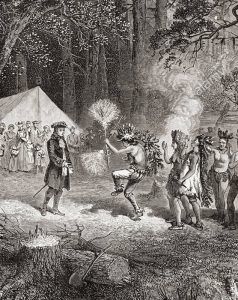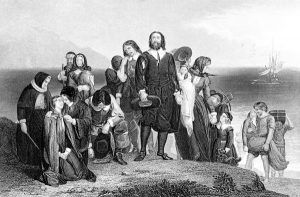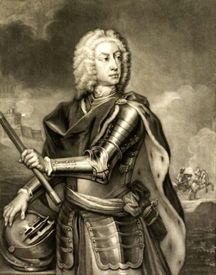In the 1730s, England founded the last of its colonies in North America. The project was the brainchild of James Oglethorpe, a former British army officer. After Oglethorpe left the army, he devoted himself to helping the poor and debt-ridden people of London, whom he suggested settling in America. His choice of Georgia, named for the new King, was also motivated by the idea of creating a defensive buffer for South Carolina, an increasingly important colony with many potential enemies close by. These enemies included the Spanish in Florida, the French in Louisiana and along the Mississippi River, and these powers’ Indian allies throughout the region.
Twenty trustees received funding from Parliament and a charter from the King, issued in June 1732. The charter granted the trustees the powers of a corporation; they could elect their own governing body, make land grants, and enact their own laws and taxes. Since the corporation was a charitable body, none of the trustees could receive any land from, or hold a paid position in, the corporation. Also, since the undertaking was designed to benefit the poor, the trustees placed a 500-acre limit on the size of individual land holdings. People who had received charity and who had not purchased their own land could not sell or borrow money against it. The trustees wanted to avoid the situation in South Carolina, which had very large plantations and extreme gaps between the wealthy and the poor.
The undertaking was very paternalistic, as the trustees did not trust the colonists to make their own laws. Therefore, they did not establish a representative assembly, although every other mainland colony had one. The trustees made all the laws for the colony. Second, the settlements were laid out in compact, confined, and concentrated townships. In part, this arrangement was instituted to enhance the colony’s defenses, but social control was another consideration. Third, the trustees prohibited the import and manufacture of rum, for rum would lead to idleness. Finally, the trustees prohibited black slavery, for they believed that this ban would encourage the settlement of “English and Christian” people.
Georgia’s first year, 1733, went well enough as settlers began to clear the land, build houses, and construct fortifications. Those who came in the first wave of settlement realized that after the first year, they would be working for themselves. Meanwhile, Oglethorpe, who went to Georgia with the first settlers, began negotiating treaties with local Indian tribes, especially the Upper Creek tribe. Knowing that the Spanish, based in Florida, had great influence with many of the tribes in the region, Oglethorpe thought it necessary to reach an understanding with these native peoples if Georgia was to remain free from attack. In addition, the Indian trade became an important element of Georgia’s economy.
It didn’t take long, however, until the settlers began to grumble about all the restrictions imposed on them by the trustees. In part, this grumbling may have been due to the fact that most of those moving to Georgia after the first several years were from other colonies, especially South Carolina. These settlers viewed restrictions on the size of individual landholdings as a sure pathway to poverty. They also opposed restrictions on land sales and the prohibition against slavery for the same reason. They certainly did not like the fact that they were deprived of any self-government and their rights as Englishmen. By the early 1740s, the trustees slowly gave way to most of the colonists’ grievances.
Compiled by Kathy Weiser-Alexander/Legends of America, updated July 2021.
Also See:
Source: Library of Congress



